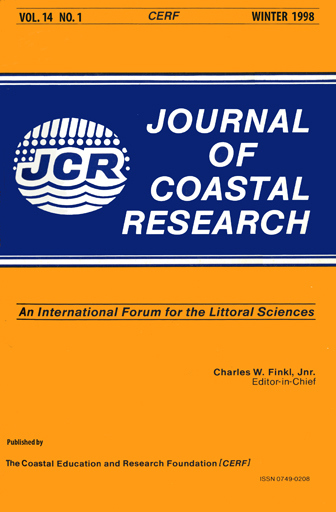Monitoring the Coastal Environment; Part IV: Mapping, Shoreline Changes, and Bathymetric Analysis
Keywords:
Shoreline change, bathymetric mapping, grid models, triangular Irregular Network models, cartographic software, depth of closure, geospatial methodsAbstract
This paper presents an overview of field methods, data collection, and analysis procedures applied to four key coastal data sets used in monitoring and baseline studies: aerial photography, satellite imagery, profile surveys, and bathymetric (hydrographic) records. Often, aerial photographs and satellite images, after rectifying and georeferencing, serve as base maps to interpret landform changes and quantify shoreline movement. Large-scale topographic and hydrographic maps are the primary sources for shoreline position and volumetric change computations. Profile surveys, available from many Federal and local agencies and universities, can also be used to evaluate shoreline changes and compute beach volume changes along and across the shore. Frequently, post-processing steps are required to normalize these data to the same coordinate system and vertical datum prior to quantifying changes for a coastal area. For example, project-specific bathymetric data in the United States is often plotted using State Plane coordinates, while hydrographic data from NOAA is supplied with latitude/ longitude coordinates.
Maps, surveys, and aerial photographs are available from Federal agencies such as the USGS, NOAA, and the Corps of Engineers. These long-term data records can be used to evaluate natural and man-made changes to a coastal system. The resultant statistics and volumetric calculations should be presented in terms of the regional and local conditions, i.e., storm history, seasonality, wave climate, man-made environmental and engineering changes, and large- and small-scale landforms.


